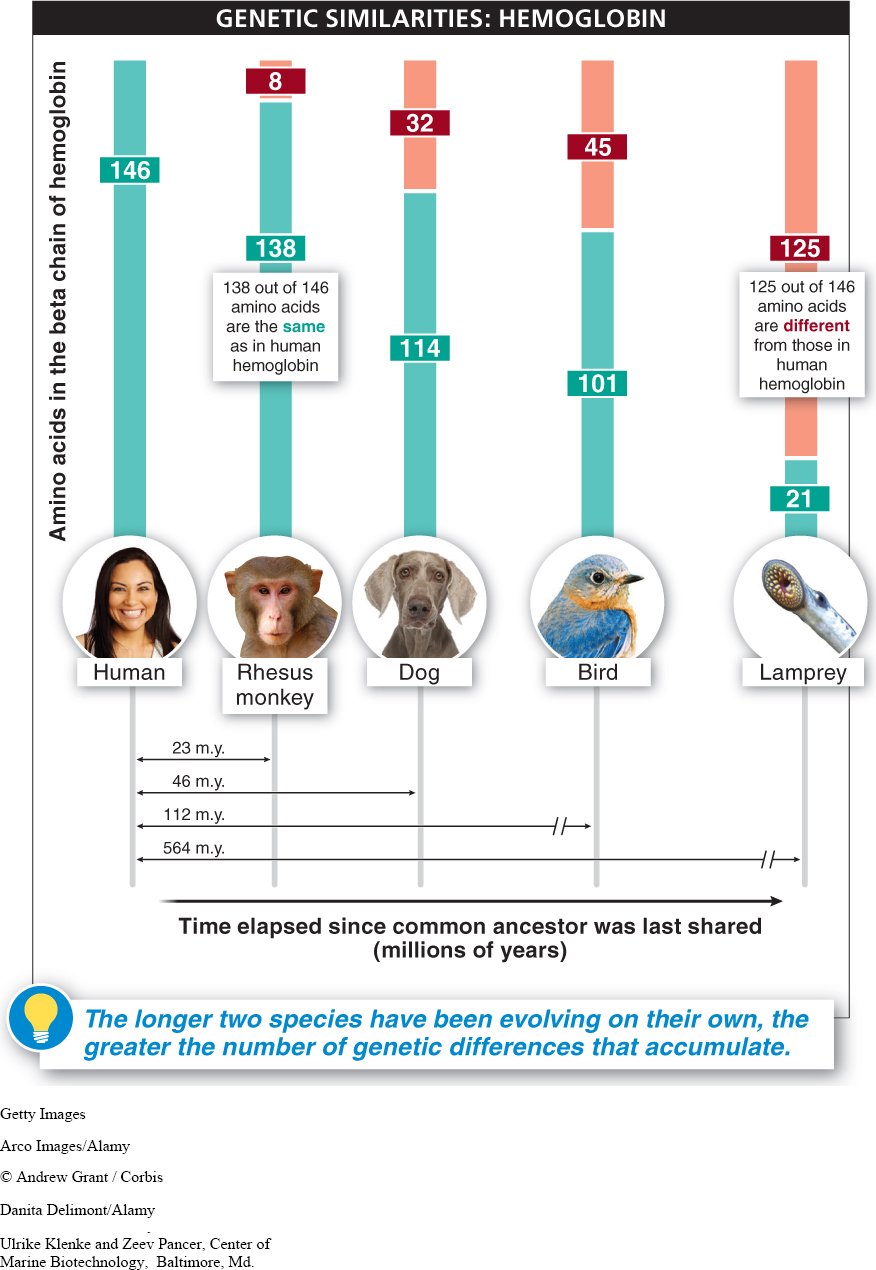8.21: Molecular biology reveals that common genetic sequences link all life forms.
New technologies for deciphering and comparing the genetic code provide our fourth line of evidence for evolution. From microscopic bacteria to flowering plants to insects and primates, the molecular instructions for building organisms and transmitting hereditary information are the same: four simple bases, arranged in an almost unlimited variety of sequences. All living organisms share the same genetic code.
When we examine the similarity of DNA among related individuals within a species, we find that they share a greater proportion of their DNA than do unrelated individuals. This is not unexpected; you and your siblings got all of your DNA from the same two parents, while you and your cousins got half of your DNA from the same two grandparents. The more distantly you and another individual are related, the more your DNA differs.
We can measure the similarity between the DNAs of two species by comparing their DNA sequences for individual genes. For example, let’s look at the gene that codes for a polypeptide used to build hemoglobin. In vertebrate animals, hemoglobin is found inside red blood cells, where its function is to carry oxygen throughout the body. It is made up of two types of chains of amino acids, the alpha chain and the beta chain. In humans, the beta chain has 146 amino acids. In rhesus monkeys, this beta chain is nearly identical: of the 146 amino acids, 138 are the same as those found in human hemoglobin, and only 8 are different. In dogs, the sequence is still somewhat similar, with 114 of the same amino acids. When we look at non-
The differences in the amino acid sequence of the beta hemoglobin chain (and thus the alleles that code for this structure) seem to indicate that humans have more recently shared a common ancestor with rhesus monkeys than with dogs. And that we have more recently shared an ancestor with dogs than with birds or lampreys. These findings are just as we would expect, based on estimates of evolutionary relatedness made from comparative anatomy and embryology, as well as from the fossil record. It is as if a molecular clock is ticking. The longer two species have been evolving separately, the greater the number of changes in amino acid sequences—

TAKE-HOME MESSAGE 8.21
All living organisms share the same genetic code. The degree of similarity in the DNA of different species can reveal how closely related they are and the amount of time that has passed since their last common ancestor.
Why are the genetic similarities between humans and monkeys greater than the similarities between humans and dogs?
356